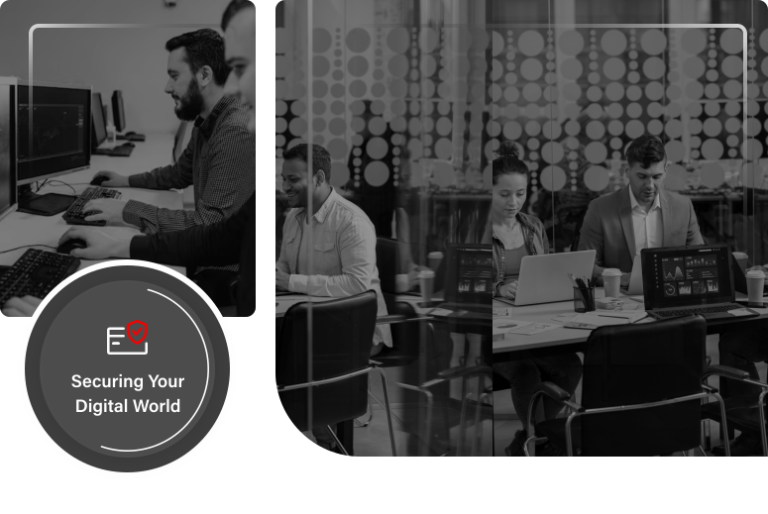Leading the Green Revolution: Achieve Excellence with ISO 14001 Certification
I. Introduction
A. Overview of ISO 14001
ISO 14001 is a globally recognized standard for environmental management systems (EMS). It provides a structured framework to help organizations manage their environmental responsibilities systematically, aiming to enhance sustainability. By focusing on reducing waste, pollution, and resource consumption, ISO 14001 helps organizations ensure compliance with relevant regulations while driving continuous improvement in their environmental performance. As part of the ISO 14000 family of standards, it supports businesses in meeting their sustainability goals and improving their overall environmental impact.
B. Why ISO 14001 Certification Matters
ISO 14001 certification is more than a mere compliance badge; it represents a company’s dedication to environmental stewardship and sustainability. In today’s marketplace, stakeholders—including customers, regulators, and investors—expect businesses to operate responsibly with the environment in mind. Achieving ISO 14001 certification helps organizations not only meet legal requirements but also enhances their market position by appealing to eco-conscious consumers and partners.
II. What is ISO 14001 Certification?
A. Key Elements of ISO 14001
ISO 14001 comprises several core elements that work together to develop an effective EMS. These elements ensure that a company’s environmental impact is controlled and improved systematically:
- Environmental Policy
At the core of ISO 14001 is the requirement to establish a robust environmental policy. This policy should express the organization’s commitment to complying with environmental regulations, preventing pollution, and striving for continuous improvement in environmental performance.
- Planning
Planning involves identifying the environmental aspects of the organization’s operations and evaluating their significance. This step includes setting specific environmental objectives and targets based on this analysis and relevant regulatory requirements.
- Implementation and Operation
ISO 14001 necessitates creating action plans to meet the established objectives. This includes defining roles and responsibilities, ensuring employee training, and documenting EMS processes. Effective communication within the organization and thorough documentation are essential for successful implementation.
- Monitoring and Measurement
To gauge effectiveness, the EMS must incorporate procedures for monitoring and measuring environmental performance. This involves tracking key indicators such as energy consumption, waste generation, and emissions.
- Evaluation and Continuous Improvement
Regular internal audits and management reviews are vital to assess EMS performance. This element emphasizes identifying areas for improvement and implementing changes to continually enhance environmental performance.
- Compliance Obligations
ISO 14001 stresses the importance of meeting legal and other regulatory requirements related to environmental management. Organizations must actively work to comply with these obligations and integrate them into their EMS planning and objectives.
B. The Certification Process
Achieving ISO 14001 certification involves several steps to ensure that an organization’s EMS meets the standard’s requirements:
- Gap Analysis
Many organizations start by conducting a gap analysis to pinpoint where their current environmental practices fall short of ISO 14001 requirements. This analysis helps outline the necessary steps to achieve certification.
- EMS Development and Implementation
Following the gap analysis, companies develop and implement an EMS based on ISO 14001 guidelines. This includes setting up environmental monitoring procedures, conducting internal audits, and managing risks. Employee training is crucial to ensure everyone understands their role in the EMS.
- Internal Audits and Review
Once the EMS is operational, internal audits assess its effectiveness and compliance with ISO 14001. These audits identify issues and areas for improvement, which are addressed before the external certification audit.
- Certification Audit (Stage 1 and Stage 2)
The certification process includes two stages of external audits by a third-party certification body:
- Stage 1 Audit: A preliminary review of the organization’s documentation and EMS framework to assess readiness for the full certification audit.
- Stage 2 Audit: An on-site assessment examining how the EMS is implemented in practice, ensuring compliance with ISO 14001 requirements.
- Certification Decision
After the stage 2 audit, the certification body reviews the findings. If the organization meets the requirements, it receives ISO 14001 certification, typically valid for three years with periodic surveillance audits.
- Continual Improvement and Re-certification
ISO 14001 certification requires ongoing improvement of the EMS and re-certification every three years. Regular monitoring and audits ensure continued compliance with evolving environmental standards and regulations.
III. Benefits of ISO 14001 Certification
A. Regulatory Compliance
ISO 14001 certification helps organizations stay compliant with environmental regulations. With governments increasingly enforcing stricter environmental laws, non-compliance can lead to fines, legal actions, or operational shutdowns. ISO 14001 provides a framework to manage these requirements effectively.
B. Operational Efficiency and Cost Savings
Certification often leads to operational efficiency improvements and cost savings. By identifying inefficiencies and reducing waste, companies can lower material costs and decrease waste sent to landfills. Improved resource management can lead to significant financial benefits over time.
C. Enhanced Reputation and Market Access
In a competitive marketplace, demonstrating a commitment to environmental responsibility can attract customers, investors, and partners. ISO 14001 certification signals to stakeholders that a company is dedicated to sustainable practices, enhancing its reputation and market access.
D. Improved Stakeholder Relations
ISO 14001 fosters better relationships with stakeholders, including employees, customers, investors, and communities. By adopting environmentally sound practices, organizations earn trust and respect, build stronger partnerships, and contribute to community and environmental conservation efforts.
IV. Implementing ISO 14001: Steps and Best Practices
A. Initial Gap Analysis
The first step in ISO 14001 implementation is conducting a gap analysis to compare current practices with ISO 14001 requirements. This assessment helps identify necessary improvements and provides a roadmap for achieving certification.
B. Developing an Environmental Policy
Following the gap analysis, develop a comprehensive environmental policy reflecting your organization’s commitment to environmental management. This policy should outline objectives for reducing emissions, minimizing waste, and improving resource efficiency.
C. Setting Objectives and Targets
Set specific, measurable objectives and targets to guide your environmental efforts. These should align with your environmental policy and focus on areas where significant improvements can be made, such as reducing carbon emissions or enhancing waste management practices.
D. Employee Training and Engagement
Effective ISO 14001 implementation requires employee training and engagement. Training programs should build awareness and competence in environmental management practices, ensuring that all employees understand their roles in maintaining compliance.
E. Monitoring, Measuring, and Auditing
Continuous monitoring and measurement of environmental performance are crucial. Collect data on key indicators like energy consumption, waste generation, and emissions to ensure the EMS is functioning effectively and meeting objectives.
V. Common Challenges in ISO 14001 Certification
A. Resistance to Change
Organizations often face resistance to change when implementing certificazione 14001. Employees and management may be reluctant to adopt new practices due to concerns about increased workload or disruptions. Overcoming this resistance involves clear communication and demonstrating the benefits of the EMS.
B. Understanding Complex Requirements
ISO 14001 requirements can be detailed and complex. Organizations may struggle to fully comprehend and implement these requirements, which cover various aspects of environmental management and compliance.
C. Keeping Up with Regulatory Changes
Staying current with evolving environmental regulations is a common challenge. Governments frequently update laws to address new environmental issues, and organizations must keep pace to maintain ISO 14001 compliance.
VI. The Role of ISO 14001 Training
A. Importance of Proper Training
Proper training is essential for the successful implementation and maintenance of an ISO 14001 EMS. Training provides employees with the knowledge and skills needed to contribute effectively to environmental goals and compliance.
B. Types of Training Available
ISO 14001 training programs vary in format and complexity:
- Introductory Training
This foundational course offers an overview of ISO 14001, its key components, and the benefits of an EMS. It raises awareness and ensures a basic understanding of environmental issues across the organization.
- Internal Auditor Training
Designed for employees responsible for internal audits, this course covers audit planning, execution, reporting, and follow-up. Internal auditors play a crucial role in maintaining the EMS and supporting continuous improvement.
- Lead Auditor Training
For those leading EMS audits, this advanced course covers audit principles, ISO 14001 requirements, and assessing environmental management practices. It is ideal for professionals aiming for leadership roles in ISO compliance and auditing.
- Implementation Training
Focused on the entire ISO 14001 implementation process, this course provides practical guidance on developing an EMS, setting objectives, monitoring performance, and preparing for audits.
C. Choosing the Right Training Provider
Selecting the right training provider is crucial for effective ISO 14001 training. Consider the following factors:
- Accreditation and Certification
Ensure the provider is accredited and offers certified courses that align with ISO 14001 requirements.
- Trainer Expertise
Look for providers with experienced trainers who have extensive knowledge of environmental management systems and practical ISO 14001 implementation.
- Course Content and Customization
The training should cover all relevant aspects of ISO 14001 and offer practical insights tailored to your organization’s needs.
- Format and Flexibility
Consider the training format, whether in-person, online, or blended, and choose options that fit your organization’s schedule and needs.
- Reputation and Reviews
Research the provider’s reputation by reading reviews and testimonials from previous clients to ensure high-quality training.
VII. Conclusion
A. The Future of ISO 14001 Certification
As global environmental concerns intensify, ISO 14001 certification is becoming increasingly significant. Businesses face growing pressure from governments, stakeholders, and consumers to adopt proactive environmental practices. The future of ISO 14001 may involve integrating emerging technologies like AI and IoT to enhance environmental management, enabling real-time monitoring and reporting.
B. Encouraging Organizations to Pursue Certification
The advantages of ISO 14001 certification extend beyond regulatory compliance. They include improved operational efficiency, cost savings, enhanced reputation, and better stakeholder relations. Organizations pursuing ISO 14001 should view it as an investment in long-term sustainability and competitiveness. Achieving certification can open new markets, strengthen relationships, and differentiate businesses in competitive environments.






